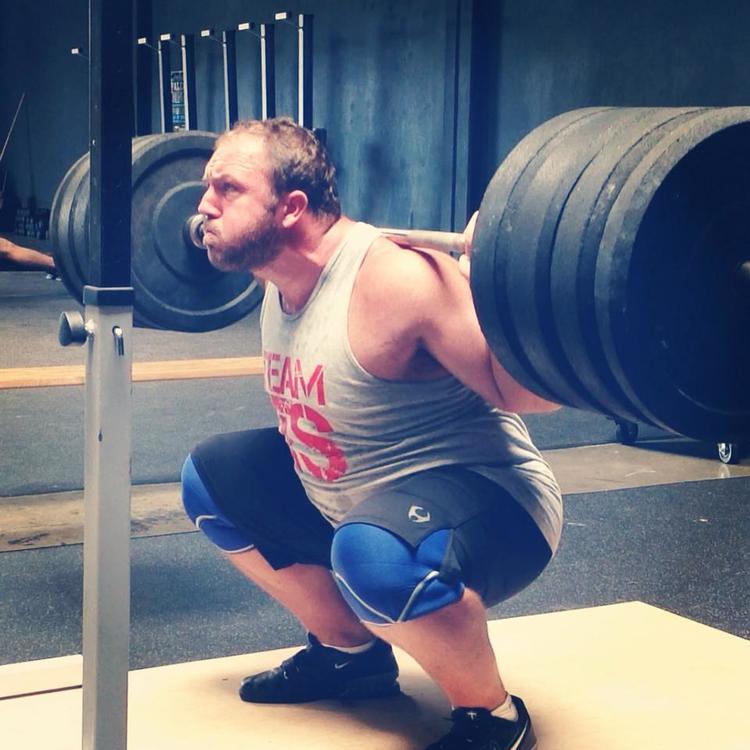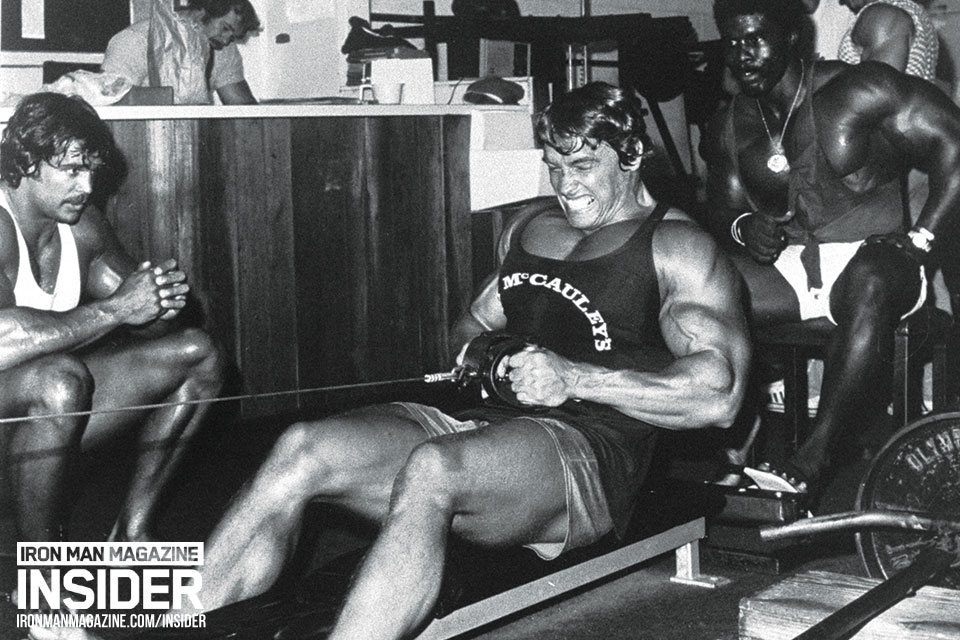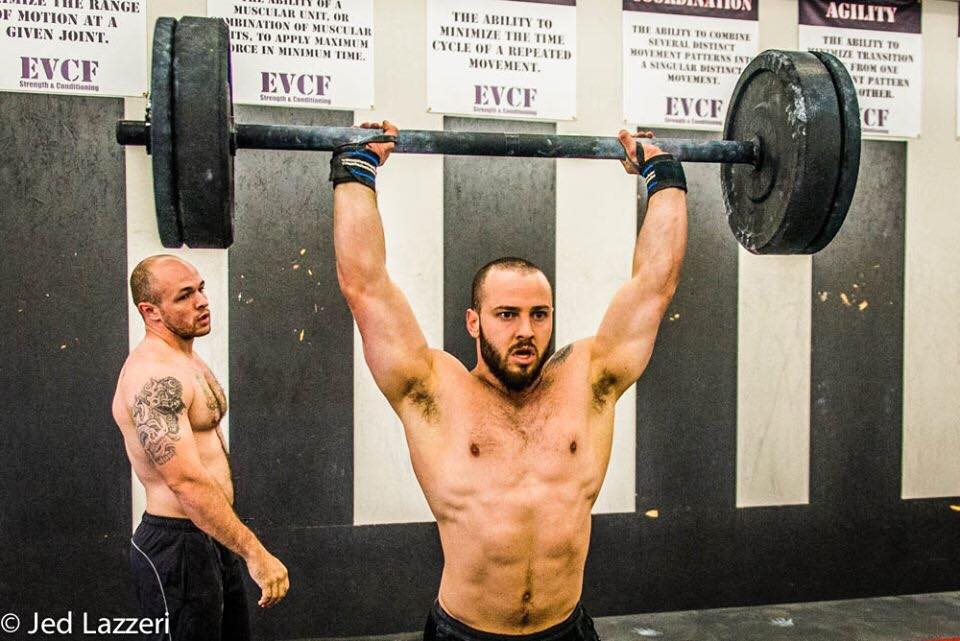The functional fitness movement was to some degree a backlash against the commercialization of fitness.…

On Specificity and High Standards: Interview with Chad Wesley Smith of Juggernaut Training Systems
You’ve had such a wildly successful athletic career as a track athlete, powerlifter, and a strongman competitor. What accomplishments are you most proud of?
First and foremost, I’m proud of Juggernaut Training Systems. We just celebrated our sixth anniversary. Other than that, going chronologically, I was a 2x National Champion in shotput, a professional strongman competitor, and as a powerlifter, I achieved the 10th highest raw powerlifting total of all time.
How did Juggernaut Training Systems and The Juggernaut Method come to be?
When it started out, I made a business plan with one of my buddies and opened up a gym in Orange County—well, at the time, I thought it was a business plan. In hindsight, I realize that’s not what it was at all. We just focused on training athletes in person and didn’t have real goals beyond that. The Juggernaut Method was a progression I wrote that we were using with a lot of the athletes, and it was very successful. I used it for my first powerlifting meet in 2010, and I thought maybe other people would be interested in using it as well.
In 2010, the strength market wasn’t nearly as crowded as it is now. Not everyone was writing eBooks then. Actually, I want to note that I think I might have been the first one to call something the “________ Method.” I wrote the Juggernaut Method, formatted it myself, created the cover myself, and put it out for sale.
From there, I saw that—even though the gym was doing well—we were never going to be able to impact more than 150 people a month in that facility. By contrast, there were thousands and thousands of people reading this book. There was also an article in Muscle & Fitness that reached an even greater readership. I realized that through writing and through the internet, I could get to an even broader audience. So, when the gym’s lease was up in 2012, I decided to step away from that. I continued to train athletes in another space, but put a lot more energy into creating a platform for all these coaches and athletes I respected and I felt weren’t getting the reach they deserved to share those ideas.
There are “internet coaches” and coaches who put stuff on the internet. Internet coaches are people who’ve never coached anyone in person, but they talk a great game and maybe they can put a lot of good theories out there, but sometimes the internet is overpopulated with such people. So, with Juggernaut, I wanted to put people out there who were really living it on a day to day basis.
Would you say that that’s why JTS has been successful?
Yeah when we first tried to make a push towards more substantial growth in 2012, we had like 20,000 hits… this month, we had like 600-700k. With that kind of growth, a lot of people will ask me a lot of marketing questions… and I don’t have answers to that. My degree is in history. But yeah, I really think that our growth has been almost as organic as it could be because we just wrote valuable information and put it out there, and consumers were smart enough to tell the difference between real information and fluff pieces.
How and when did you form a relationship with Renaissance Periodization?
When, I don’t even remember to be honest. They were working with one of our sponsored athletes at the time, and Mike Israetel wrote an article for the site that became really popular. We met with the other guys from RP, and realized we were all on the same page about what we wanted to do. They’re a bunch of PhDs with a lot of solid research, and we all wanted to get good information out there. I already had a big audience, so I just gave them the platform to let them spread their brilliance.
On the JTS website, what are some of your favorite articles—either authored by you or by one of your many other contributors?
There are definitely a lot of really good articles on there. For my articles, I’d look back at some of the stuff I wrote in 2010 or 2011—probably because I hadn’t written as much stuff then. New ideas weren’t as hard to come up with and I was probably even overzealous with some of them.
For programming, my favorite is probably “Periodization for Powerlifting—the Definitive Guide” co-authored by Greg Nuckols and Mike Israetel, two supersmart guys. If you really want to understand what’s going on in designing your own program, that’s a great place to start. We write books that have programs, but even in those, I try to be as descriptive as possible as opposed to prescriptive. Our newest book, Scientific Principles of Strength Training does that—describing the principles that create a solid program. Programs out there that just give you a template to follow… they’re easier, but they almost do a sort of disservice in that you never take ownership of your training and never know the reasoning behind anything or how to adjust for the individual.
As far as movement stuff goes, “The Best Damn Squat Mobility Article. Period” is a pretty big one, by Dr. Quinn Henoch. It has a lot of material and tons of videos. People are always asking me “why can’t I squat to depth?” and that article pretty much covers all the bases. It’s written for the squat so it’ll hold true for a lot of clean and jerk and snatch issues and general athletic movement.
If I had to pick my own, I have a three-part series called “Consolidation of Stressors.” It covers short term, medium, and long term. Those articles, I think, really give good insight into planning for an entire training cycle, or for even very long term athletic development, which I think is something very misunderstood, or even if it’s understood difficult to apply.
I’ve seen you talk about the importance for lifters to build up their work capacity during the off-season. What sort of workouts would you use for that?
It depends on where the athlete is in his or her career. A fifteen-year-old who’s been weightlifting for a year will have broader requirements than someone who’s 30 years old and has been powerlifting for 10 years. The more qualified an athlete is, the more specific even the off-season work is going to be.
For myself, when I’m looking at building work capacity, I use mostly more volume, higher rep ranges, and a few more general exercises, but a very small degree of change. For someone who’s highly qualified, doing 8-12 reps in a high bar squat when their competitive movement is 1 rep in a low bar squat, that’s general enough. For me, as a powerlifter, I use 60-75% intensity for sets of 6-12 reps in variations of the competitive movement.
I have an article, “The Pyramid of Strength,” that covers the degree of specificity vs. an athlete’s qualification. The more qualified an athlete is, the closer s/he gets to the peak of the pyramid. The exercise selections get more and more focused. For someone who’s just begun training, I would use more general movements like jumps, rows, sprints, squatting movements, explosive hip extension movements… etc.
I’ve also heard you talk about the importance of explosive strength for all strength athletes (obviously it’s key for weightlifters, but a big deal for powerlifters as well). What are your favorite exercises/tools for developing that?
Again, it has to be framed by the idea of specificity. Specificity is most important training principle, which will create a framework for all the other principles to work within. For a weightlifter, every squat needs to have intent to move the bar with the maximum velocity in the concentric phase of the lift. Slow eccentric movements can be useful at certain times, but concentric should be explosive. All different kinds of jump variations are also going to be really helpful. You can work through a pretty wide range of resistance from unloaded box jumps to squat jumps with a bar on your back, holding kettlebells, wearing a weight vest, etc., and all those different weight ranges are going to have merit. Med ball throws for maximal height and distance can also have their place.
It’s all going to be contextualized by where the athletes are in their careers and annual plan. If we just finished nationals, and people who aren’t World Team contenders—they’re probably in a general phase right now, so that would be the time that they want to include more general movements like jumps, throws, sprints.
Okay, so on the topic of specificity, that becomes a challenge when programming for and coaching CrossFit. Here’s a thought experiment—if you were programming for a CrossFit gym, how would you go about it? Let’s say it’s a gym in a decent-sized city, you have the usual CrossFit hodgepodge: high school athletes looking to get bigger, stronger, faster; former college athletes who’ve gone a little soft in their middle age; untrained desk-jockeys looking for a change from their gym circuits and Zumba. How do you write a program that can best benefit such a diverse population?
Specificity is still going to exist, but it’s goal dependent. So with general members, the specific goal is going to be “look better, feel better.” People who aren’t competing are going to be fairly low on the pyramid of strength/qualification. Pretty general means will help them achieve that goal. When it comes to that kind of thing, you just kinda have to create a balance between different energy systems, different movement categories, etc.
I think an assessment at the beginning of the training program would be helpful. When I worked with football players or wrestlers, they were doing the same movements in the weight room more or less, but one athlete might be doing a high bar ass to grass squat while another might be doing a goblet squat or a front foot elevated split squat. There are going to be progressions and regressions within every movement category. Creating an assessment where you can evaluate what each person can do well with their mobility and stability issues can help a lot.
A lot of people I’ve spoken to have remarked on how CrossFit has changed the demographics of strength athletes. What do you see as the future with in strength sports?
I see continued growth for weightlifting and powerlifting, and hopefully improved structure for USAW. I’d like to see better support their higher level athletes and coaches. We have such a deep and rich talent pool, I really believe we can be even more competitive in the global arena—we just need to find the right athletes. For powerlifting, I’d like to see some more unification—particularly, fewer federations. I’d also like to see more standardized judging across the board.
As we see continued growth, I hope that the revenue can lead to meets where lifters can make some real money, and maybe even get some air time on TV. I’ve had a few meetings with production groups who’ve done stuff with Discovery Channel and Fox Sports and they want to put powerlifting and weightlifting on TV. After CrossFit, people are now familiar with the deadlift and the clean and jerk, and are more likely to want to watch these things on television.
How do you see JTS growing in the future?
I want to keep doing what we’re doing, but do it better and better. There’s a quite from Mark Zuckerberg that really resonated with me: “We don’t build services to make money; we make money to build better services.” They’re always focused on the end user experience. At JTS we want to continue to create more high quality articles and videos and everything to educate everyone out there who’s interested. I’d also like to use this platform to get more support for athletes and highly qualified coaches… to allow these people to share their message to a bigger and bigger audience.
The explosion of popularity for strength sports following CrossFit has been fantastic, but I’m concerned about the lowered standards for “experts.” Now anyone with six-pack abs and an Instagram account can offer his “expertise.” So, with JTS, I just hope to continue to bring actual experts to the forefront.
And for your own career, do you have specific goals you’re working towards as an athlete and/or coach?
I have two powerlifting meets coming up (in November and December of this year). November, in Australia, three weeks later in Russia. One with knee wraps, one without. In Australia, I hope that I’ll be able to squat over 1,000 (in knee wraps) and total over 2,400. And then in Russia, I’m excited to do a meet in sleeves, and hopefully I’ll make a good push for the World Record total.
If those go well, I’d make those my last competitions as a real serious competitor. I want to get back to training I just enjoy—training just for the sake of training. I’d also like to have more time to focus on relationships and growing Juggernaut. It’s hard to do everything at a high level.
What is the best way for people to find you?
Facebook – Juggernaut Training Systems
Instagram – @JuggernautTraining, and @ChadWesleySmith


